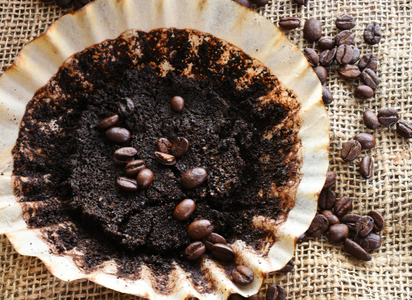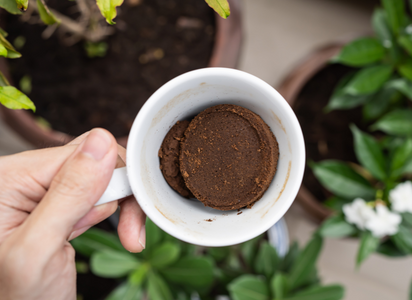Growing up, I spent countless hours at my aunt and uncle’s especially their yard. Gardening was their favorite pastime and some of the most memories I have of them. My uncle used to put everything to good use including… you guessed it… coffee grounds! As an adult, now that I do my own gardening, I have learned that while some plants can benefit from coffee grounds mixed in with soil, not all plants can handle the acidity and caffeine present in them.
Let’s explore the nutrients in coffee grounds, why they can hurt certain plants, how to safely use them in your garden, and also, a list of 15 plants that don’t do well with coffee grounds as a mixture.
Why Do Coffee Grounds Hurt Certain Plants?

There are a couple of different reasons why certain plants don’t do well with grounds: change in acidity of the soil, caffeine, and fungal diseases. Let’s explore each one.
Acidity:
The acidity in coffee grounds can cause a shift in the pH level of your garden soil making it unsuitable for certain plants. For example, blueberries prefer a more neutral environment with a pH value between 4-5. Adding coffee grounds to their soil could increase the pH value and hurt them and that’s certainly not what you want to do to your blueberry friends.
Caffeine:
Coffee grounds contain caffeine, which can inhibit photosynthesis and hinder a plant’s ability to feed itself water, leading to stunted growth. Definitely not something we want for our plants.
Fungal Diseases:
That’s not all. There’s more: large amounts of coffee grounds can harbor fungal diseases that can spread to other plants and cause root rot and other ailments. Signs of distress in a plant after adding coffee grounds include yellowing leaves or stunted growth, indicating an imbalance in the soil’s nutrient levels. The leaves’ color can also be a telling sign with yellowing leaves indicating a lack of nutrients.
How to Use Coffee Ground in Your Soil
While coffee grounds can be a great source of nitrogen for plants that prefer acidic soil, they should only make up 10-15% of the soil content. Mixing them with compost can help dilute them and avoid imbalances in the soil’s pH levels. It’s also essential to know which plants don’t like coffee grounds and this article provides a list of 15 such plants.
15 Plants That Don’t Like Coffee Grounds
- Alfalfa
- Clovers
- Broccoli
- Cabbage
- Onions and Shallots
- Rosemary
- Tomatoes
- Sago Palm
- Yucca
- Asparagus
- Cauliflower
- Celery
- Beets
- Roses
- Chrysanthemums
Make sure to print these or save them to refer later.
Nutrients in Coffee Grounds

Here is a list of all the nutrients in coffee grounds:
- Nitrogen
- Magnesium
- Phosphorus
- Copper
- Potassium
- Calcium
- Sulfur
Let’s discuss a few of these nutrients. In particular, nitrogen is a crucial nutrient that promotes plant growth. Likewise, phosphorus supports root growth and flowering while potassium can enhance plant cells’ strength, making them more resilient to pests and diseases (gross!). Lastly, magnesium is essential for photosynthesis and chlorophyll production, and copper plays a vital role in enzyme activity and plant growth.
We can now see how the grounds can help provide nutrients to certain plants.
Can I Mix in Coffee Grounds into the Soil Directly?
No, you shouldn’t mix in the grounds directly in with your soil. This can increase the pH level of the soil and kill your plants! As mentioned earlier, it’s safer to dilute it by mixing it with two or three parts of compost before adding it to the soil. Adding coffee grounds directly to the soil is a surefire way to hurt your plants.
Conclusion
In conclusion, what plants dislike coffee grounds? Plants that can’t tolerate acidic soil such as blueberries, gardenias and camellias are particularly sensitive to the added acidity from the grounds. If you plan on using them for your plants, then be sure to use them in small quantities and monitor their health closely! Good luck and happy planting with your brown and green thumbs!